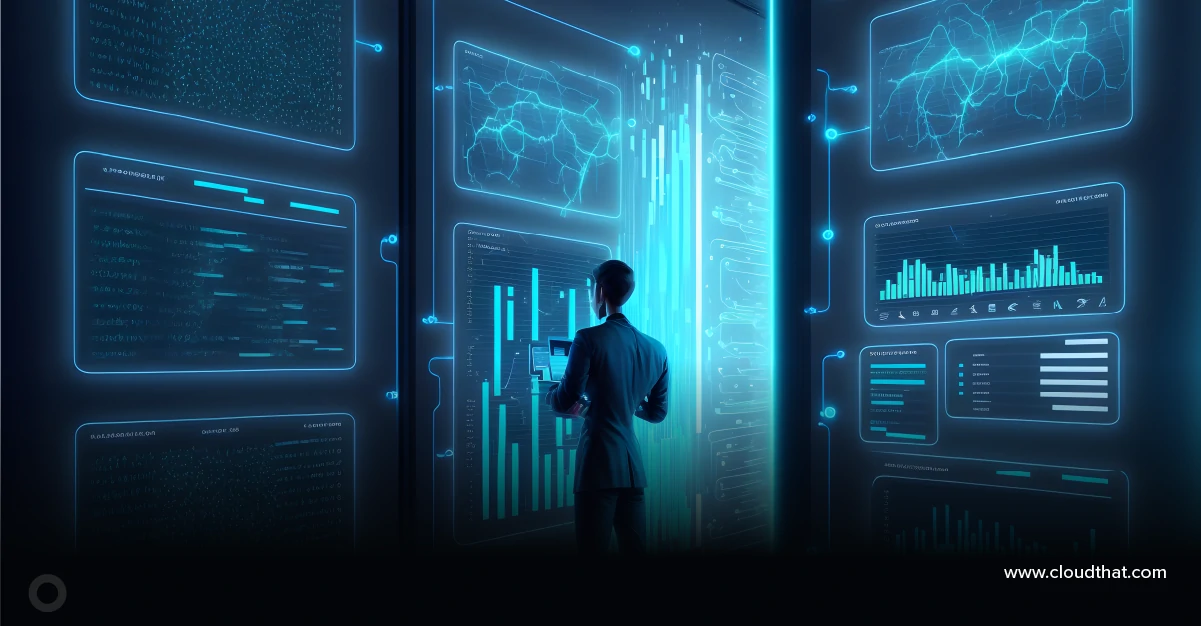|
Voiced by Amazon Polly |
Introduction
In the digital age, where data reigns supreme, managing vast volumes of information swiftly and efficiently is a success. Google Cloud Bigtable is a formidable solution, offering a dynamic and versatile NoSQL database service that manages colossal datasets with unparalleled speed, scalability, and precision. In this comprehensive exploration, we will delve deep into the intricacies of Google Cloud Bigtable, unlocking its key features, architectural nuances, diverse use cases, and pragmatic implementation details that position it as an indispensable tool in the modern data landscape.
Pioneers in Cloud Consulting & Migration Services
- Reduced infrastructural costs
- Accelerated application deployment
Google Cloud Bigtable
Drawing inspiration from Google’s proprietary internal Bigtable system, which underpins numerous core services, Google Cloud Bigtable is tailored to address real-time analytics, Internet of Things (IoT) applications, time-series data processing, and more.
Key Features
- Scalability: Google Cloud Bigtable’s crowning glory is its ability to scale horizontally, providing an elegant solution for businesses grappling with exponentially growing datasets. This adaptive scalability ensures optimal performance even as data volumes surge.
- Low-Latency Access: With architecture meticulously designed for expedited data access, Google Cloud Bigtable boasts remarkably low-latency responses. This attribute proves indispensable for applications that demand real-time insights and rapid decision-making.
- Schema Flexibility: Google Cloud Bigtable embraces schema-less design, enabling data to be stored in a non-conforming, sparsely populated manner. This flexibility accommodates evolving data structures and caters to ever-changing business needs.
- Automated Scaling: The service’s auto-scaling capability obviates the need for manual resource management. Google Cloud Bigtable dynamically adjusts resources in response to fluctuating workload demands, ensuring optimal performance without intervention.
- Seamless Integration: Google Cloud Bigtable harmoniously coexists with other Google Cloud services, presenting a united front for comprehensive data processing pipelines. It effortlessly interfaces with Dataflow, BigQuery, and various other components of the Google Cloud suite.
Architecture
The architectural foundation of Google Cloud Bigtable comprises three fundamental components:
- Table: At the apex of this hierarchy lies the table, which serves as the primary container for data storage. A table is populated with multiple rows and columns of information.
- Row: Each individual data entry is encapsulated within a row, and a designated row key uniquely identifies these rows. In true NoSQL fashion, each row can accommodate various columns.
- Column Family: Columns within Google Cloud Bigtable are grouped under a common umbrella called a column family. This logical categorization organizes related data within a row, enhancing data management and retrieval efficiency.
Use Cases
Google Cloud Bigtable’s versatile nature caters to a myriad of use cases, making it an indispensable asset for diverse scenarios:
- Real-Time Analytics: Google Cloud Bigtable shines as a beacon of high-performance analytics for applications demanding real-time insights from streaming data sources. Industries like finance and social media benefit immensely from immediate, data-driven decisions.
- IoT Data Storage: In the realm of IoT, where many devices generate data in real time, Google Cloud Bigtable is invaluable as a repository for massive datasets. This capability facilitates agile and informed decision-making in the dynamic IoT landscape.
Implementation
Embracing Google Cloud Bigtable entails a strategic, systematic approach:
- Google Cloud Project: Create a Google Cloud Project, establishing the foundation for your data management endeavors.
- Instance Configuration: Construct a Bigtable instance, specifying its location and crucial configuration details.
- Table Craftsmanship: Within the instance, fashion a table tailored to your data storage needs. Define the composition of column families, elucidating the structure of your data repository.
- Data Ingress: Initiate the influx of data into your Bigtable table using various methods, such as the HBase API or specialized client libraries.
- Data Retrieval and Analysis: Harness Google Cloud Bigtable’s potent APIs to retrieve, analyze, and derive insights from your stored data, unlocking the true potential of your data reservoir.
Conclusion
Google Cloud Bigtable stands as a testament to Google’s commitment to empowering organizations with a dynamic, high-performance data management solution. Its ability to handle massive data volumes with unfaltering performance while upholding low-latency data access underscores its pivotal role in real-time analytics, IoT applications, and beyond. By navigating its multifaceted features, architectural intricacies, and versatile use cases, businesses can seamlessly integrate Google Cloud Bigtable into their data ecosystems, propelling innovation and gaining a competitive edge in a world increasingly driven by data-driven decision-making.
Drop a query if you have any questions regarding Google Cloud Bigtable and we will get back to you quickly.
Making IT Networks Enterprise-ready – Cloud Management Services
- Accelerated cloud migration
- End-to-end view of the cloud environment
About CloudThat
CloudThat is an award-winning company and the first in India to offer cloud training and consulting services worldwide. As a Microsoft Solutions Partner, AWS Advanced Tier Training Partner, and Google Cloud Platform Partner, CloudThat has empowered over 850,000 professionals through 600+ cloud certifications winning global recognition for its training excellence including 20 MCT Trainers in Microsoft’s Global Top 100 and an impressive 12 awards in the last 8 years. CloudThat specializes in Cloud Migration, Data Platforms, DevOps, IoT, and cutting-edge technologies like Gen AI & AI/ML. It has delivered over 500 consulting projects for 250+ organizations in 30+ countries as it continues to empower professionals and enterprises to thrive in the digital-first world.
FAQs
1. What is Google Cloud Bigtable, and how does it differ from other databases?
ANS: – Google Cloud Bigtable is a fully managed NoSQL database service designed for handling massive amounts of data with low-latency access. It is built on the Bigtable architecture used internally at Google and offers horizontal scalability, high performance, and automatic scaling. Unlike traditional relational databases, Google Cloud Bigtable is schema-less, which means you can adapt your data structure without complex migrations. Its architecture makes it suitable for real-time analytics, IoT data storage, time-series data, and more.
2. How does Google Cloud Bigtable achieve high scalability and performance?
ANS: – Google Cloud Bigtable achieves high scalability through its distributed architecture, allowing it to scale horizontally seamlessly by adding more nodes to the cluster. This ensures that the system can handle increased workloads as data volumes grow without sacrificing performance. Additionally, Google Cloud Bigtable’s architecture is optimized for low-latency data access, making it ideal for applications that require rapid data retrieval and real-time analytics.
WRITTEN BY Hariprasad Kulkarni


 Login
Login


 August 28, 2023
August 28, 2023 PREV
PREV











Comments